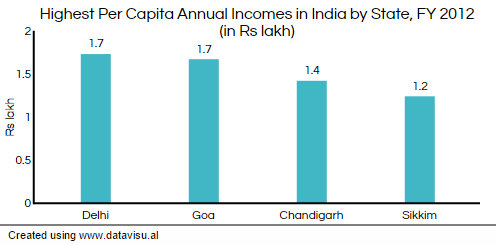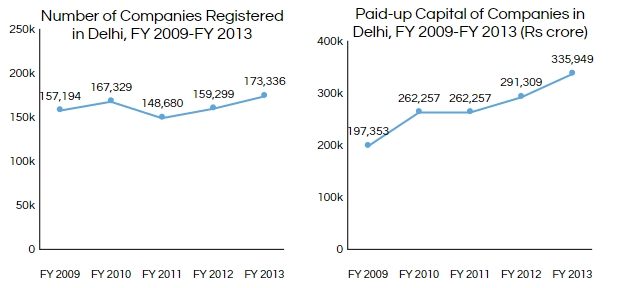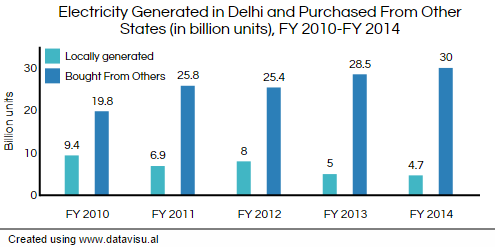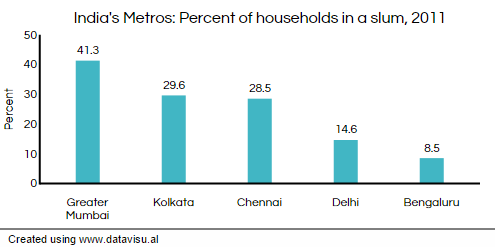Through AAP, Delhi’s Vast Underclass Speaks Up

Delhi's people are India's richest. They use the best, most extensive network of roads, and they have one of the highest rates of vehicle ownership in India. The number of companies serving and investing in their economy is growing.
On the face of it, Delhi, the world’s second-most populous city, is one of India's booming economies. Its 25 million people—according to the United Nations’ department of economic and social affairs, which counts suburbs in other states; the 2011 Census records 16.8 million—are India's most pampered.
Delhi (82% Hindus, 11.7% Muslim) is an aspirational, hard-working city, built on the collective commercial ethos of Punjabi refugees who streamed in after Independence.
In other words, it appears to be fertile electoral territory for Narendra Modi and his Bharatiya Janata Party (BJP), which he has re-crafted to represent Indian aspirations for a better life.
So, why is the Aam Aadmi Party (AAP)—as the latest opinion polls indicate—set to either defeat the BJP or run it close?
First, a quick glance at some of Delhi's positive economic indicators:
1. Dilliwallas have more money than other Indians

Source: Press Information Bureau
2. Delhi has India's highest density of roads per 1000 sq km

Source: Ministry of Statistics and Programme Implementation
3. Dilliwallas are among India's top three vehicle owners (topped only by Goa and Chandigarh)

Source: Data.gov.in
4. Companies are flocking to Delhi and their investments are rising

Source: Delhi Statistical Abstract
5. Delhiites are among India's most educated people

Source: Census 2011
The underclass finds a political voice
But Delhi also has a vast, striving and frustrated underclass, which now appears to be firmly in the AAP camp.
This report explained how 10.2 million people (60% of the population) earn less than Rs 13,500 per month.
A further examination of economic indicators by IndiaSpend reveals Delhi's vast and growing inequalities, especially on parameters that the AAP frequently highlights: water, electricity, jobs and living conditions.
Here is what our analysis reveals:
Water: Providing 700 litres of free water to every household is one of AAP’s pet promises. There is a wide disparity in water-supply across income groups, the data reveal. The Comptroller and Auditor General (CAG) report, released in April 2013, stated that 24.8% of Delhi’s households (around 32.5 lakh people) do not receive piped water. Each person gets, on average, 3.82 litres a day, 36 litres less than the minimum 40 suggested by the World Health Organisation.
Electricity: High electricity prices, a favourite AAP topic, are a major concern for many Dilliwalas. The data reveal that locally generated electricity has decreased 49%, while electricity purchased from other states has surged 51.8% over the past five years. This report explains how power cuts occur, in spite of distribution companies having surplus power.

Source: Delhi Statistical Abstract
Jobs: Rising unemployment is a big worry among Delhi’s underclass. Statistics reveal that the unemployment rate has increased, with female unemployment doubling over six years.

Source: Delhi Statistical Abstract
Slums: Nearly 15% of Delhi’s households officially live in slums, according to the 2011 Census. This is lower than in other cities such as Mumbai (41.3%) and Chennai (28.5%), but this figure does not include Delhi’s vast, unauthorised colonies, home to one in three Dilliwalas. Unauthorised colonies are not officially categorised as slums but suffer from their infirmities: cramped, unsanitary living, water and electricity shortages.

Source: Census 2011
Image Credit: AamAadmiParty.org
_____________________________________________________________
“Liked this story? Indiaspend.org is a non-profit, and we depend on readers like you to drive our public-interest journalism efforts. Donate Rs 500; Rs 1,000, Rs 2,000.”


